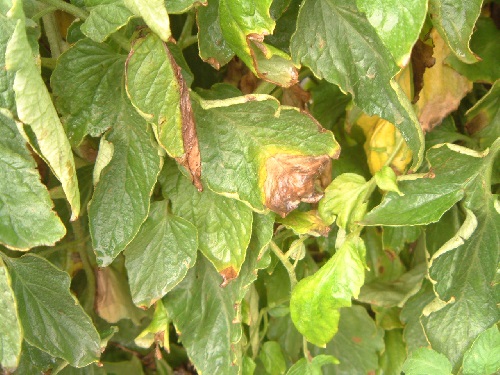Monitoring Grapevine Nutrition
Farming is all about timing. Some of the things we need to do are time flexible, like pruning, while others are time sensitive, like applying a spray for powdery or downy mildew. Missing a spray to control mildew can leave you with a problem for the rest of the season. Monitoring the nutrient status through the use of petiole analysis is also a “time sensitive” activity.
The best way to find out what fertilizers you might need to apply is to analyze “petiole” (leaf stem) samples at bloom time and again at veraison (berry softening). Bloom time is important because insufficient levels of macro or micronutrients at bloom can have a season-long effect on fruit quality. Veraison is important since it is when a major change starts to occur within the vine (i.e. the beginning of fruit ripening). Prior to veraison, the vine has been acquiring potassium from the soil and storing it within the vine (i.e. in the trunk, cordons, and canes). As the fruit ripening process begins, the potassium is remobilized and moved into the fruit. This remobilization continues through the fruit ripening process.
For vinifera (European/California) varieties, bloom time and veraison are the two vine growth stages for which research work has been completed to establish desirable levels for individual nutrients. For the labrusca and hybrid varieties, critical nutrient levels are established for veraison with research underway for desirable levels at bloom time.
Sampling Procedures
When sampling at bloom time and veraison, it is important to use a consistent approach each year.
• Vineyard Location(s): If a vineyard is uniform in growth, you can select one location. If one area has consistently better growth than another, you may select two areas to sample (i.e. “strong vs. weak” vines).
• Timing and Petiole Position: For the bloom time sample, the vines would ideally be at 70% to 80% bloom. If you are ahead of or behind this timing, it should be noted for each sample. At bloom, the petiole to be sampled should be the ones opposite the first grape cluster on the cane (i.e. the more basal cluster). At veraison, the sample should be obtained at the beginning of berry softening with the petiole obtained from a mid-cane position. A total of 70 to 80 petioles are sufficient for each sampled area. When taking a sample, snap off the petiole and blade from the cane, then discard the leaf blade and save the petiole.
• Varieties and Rootstocks: Don’t mix grape varieties. While critical levels of some nutrients are the same for all varieties, there can be significant differences between varieties for some nutrients. Research during the last 10 years has also identified significant differences in nutrient uptake among rootstocks; therefore, samples from different rootstocks should not be mixed.
• Sample Handling: Petiole samples should be placed in a paper bag and labeled with the location, row number, growth stage, and date. The samples should be delivered or shipped to an agricultural laboratory. If there is going to be a delay in delivery, the paper bags should be left open to air-dry. Do not use plastic bags since this can result in molds growing on the green tissue.
Interpreting The Results
There are a number of laboratories across the U.S. that can perform an analysis of your samples. The Extension service offices in each state typically maintain a listing of ag laboratories. You should not use an environmental laboratory since their fees are consistently higher than ag labs.
When you submit your sample, you should advise the lab that the analysis is for grapes, the type of grape (vinifera, labrusca, or hybrid), the variety, the rootstock (if applicable), and the growth stage (bloom or veraison). Based on these parameters, the lab should print the desirable/critical levels for each nutrient along with your results. It is important to ask the lab if the critical levels that they include in your report are based on university research or their personal experience. Unfortunately, sometimes labs develop their own set of critical or desirable levels for individual nutrients and do not indicate the basis of these numbers. If a lab is not using university standards, you should be aware of this.
A good vine nutrition monitoring program would include “survey” sampling at bloom time and veraison every year using standardized locations in a vineyard. In addition, during the growing season there may be noticeable differences in vine growth or leaf symptoms within a vineyard that appear to be due to a nutrient deficiency or excess. Obtaining “symptom vs. non-symptom” samples can let you know if the problem is nutritional.









